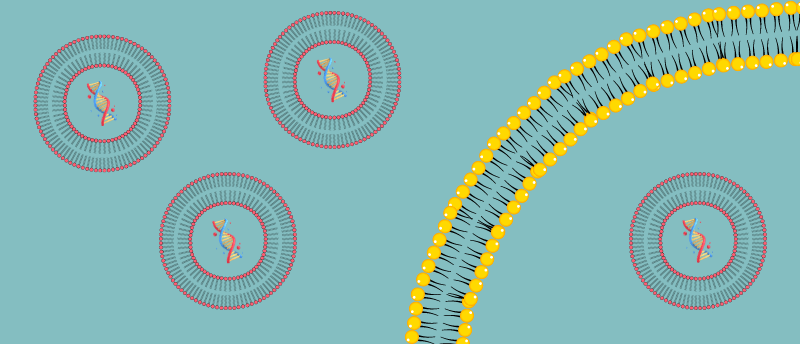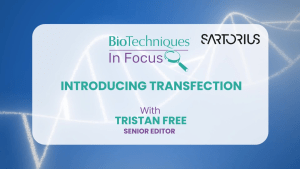Transfection: what it is and how to do it

 Hinnah Campwala (left) is a Principal Scientist in the Cell Biology Development Group at Sartorius BioAnalytical Instruments (Michigan, USA). With a background in drug discovery and immune cell biology, she specializes in the development of innovative reagents and applications to support researchers working with Sartorius’s advanced bioanalytical tools.
Hinnah Campwala (left) is a Principal Scientist in the Cell Biology Development Group at Sartorius BioAnalytical Instruments (Michigan, USA). With a background in drug discovery and immune cell biology, she specializes in the development of innovative reagents and applications to support researchers working with Sartorius’s advanced bioanalytical tools.
Here, as part of our In Focus on transfection, Hinnah discusses transfection techniques, comparing the various nucleic acid selections and approaches available, and providing tips and tricks for best practice in your transfection workflows.
What is transfection and how can it be used to study gene function and regulation?
Simply put, transfection is a foundational technique by which foreign nucleic acids such as DNA or RNA, can be introduced into mammalian host cells through non-viral means (e.g., liposomes, calcium phosphate, or electroporation), to modify gene expression or study function. Compared to transduction which relies on viral vectors to deliver genetic material, transfection is a more straightforward and safer option for many research applications.
There are many ways that transfection can be used to study gene function and regulation. For example, the role of specific genes in various cellular pathways can be tested by manipulating expression, either via enhancement or inhibition; CRISPR-Cas9 is a classic example of the latter. Reprogramming cells to better understand gene function in cellular processes like development and differentiation (or for therapeutic benefit), is also another example. Additionally, transfection can be used to introduce protein-encoding plasmids, allowing researchers to study the effects of specific proteins on target gene expression or their roles in biological pathways regulated by specific genes.
How is transfection often applied in lab research?
Transfection can be utilized in a variety of research and drug-discovery applications, making it an indispensable technique for the lab researcher’s toolbox. In addition to those highlighted above, other useful applications include reporter-gene studies for tracking cells, biomarker discovery, immune and stem cell reprogramming, validation of target genes, and screening of therapeutics. For any application, I highly recommend exploring Polyplus’ range of transfection reagents for life science research.
In what context would DNA transfection be preferred over mRNA transfection?
DNA is a more stable and cost-effective nucleic acid to produce and work with than mRNA, making it the preferred choice for many research applications. For instance, DNA transfection is ideal for the creation of cell lines that require long-term stable expression via incorporation into the host cell genome. It is also a preferred method for CRISPR genome editing and for introducing complex genetic plasmids that enable the co-expression of multiple genes. Essentially, DNA transfection is a versatile technique that may be preferred over mRNA depending on the specific experimental needs of the researcher. However, mRNA transfection is useful for applications where rapid protein expression is required since it bypasses the need for nuclear entry and transcription. Such applications include cell-reporter studies in hard-to-transfect cells, cell reprogramming, and vaccine development.

This video explores the different types of transfection methods available for DNA and mRNA transfection, comparing their advantages and disadvantages and laying out the underlying principles of transfection.
What advantages do chemical transfection technologies offer over other methods?
As highlighted in our video discussing the different transfection methods, compared to physical transfection and viral transduction, chemical transfection is more straightforward, making it accessible to researchers with varying levels of expertise. Unlike other methods, there is also no need for specialized equipment or stringent biosafety containment, making chemical transfection an easily scalable and cost-effective technology. Additionally, with recent innovations in formulation, we are now able to achieve excellent nucleic acid delivery into a wide range of cell types with minimal effects on cell health, surpassing other established methods.
What are some of the latest advances in chemical transfection technologies?
Significant advancements in recent years have led to the development of formulations with improved efficiency, reduced toxicity, and broader applicability. Of note are innovations made in lipid-based transfection reagents, such as lipid nanoparticles and liposomes. These show improvements in targeted cell delivery and uptake in hard-to-transfect (advanced) cell types. With a high transfection efficiency greater than 80% and a high cell viability after transfection of over 70% (depending on cell type), Polyplus reagents exemplify innovations in this field, offering a range of best-in-class reagents tailored to meet the specific needs of the research being conducted.
With technological advances extending their impact beyond the lab, we are also seeing a rise in improved targeted delivery systems. Notable examples include ligand-conjugated reagents, cell-penetrating peptides, and optimized reagents for CRISPR delivery. These not only facilitate target-cell specificity and transfection efficiency but also ensure that off-target effects are minimized.
What are your tips for best practice when using these technologies?
There are several things that researchers can do to ensure success, here are a few:
- Optimize transfection conditions: First and foremost, it is important to choose a transfection reagent that is compatible with the nucleic acid and cell type of choice. Once selected, conduct preliminary experiments to determine the optimal combination of components (for instance, reagent and nucleic acid concentration, volume, incubation time, temperature, and cell number). The goal here is to achieve a high transfection efficiency with minimal cell perturbation.
- Transfect healthy cells: Ensure that cells are viable, actively dividing, and have a low passage number. Regularly check for mycoplasma contamination. Prevent cells from becoming overly confluent and keep to recommended seeding densities. Furthermore, use media formulations that support cell health and are compatible with the transfection strategy.
- Follow recommendations given in the transfection protocol: Work with high-quality preparations of nucleic acids that have been stored and aliquoted correctly, avoiding freeze-thaw cycles. Remove serum and antibiotics if specified by the protocol. Also, it is important to be gentle with the nucleic acid during complexing, as vigorous mixing may cause shearing and reduce efficiency. Where possible, incorporate positive and negative controls.
- Monitor cell health and transfection success: Depending on the reagent, cells may need a media replacement or top-up to limit cytotoxicity. Cell health and transfection efficiencies should be assessed to determine the need for adjustments. For my own work, I have been using the Incucyte® for real-time live-cell imaging and analysis, as well as the iQue® for high-throughput screening by cytometry.
 Infographic: DNA vs mRNA transfection
Infographic: DNA vs mRNA transfection
This infographic reviews the working principle of DNA and mRNA transfection, highlighting their pros and cons, while providing top tips for your transfection studies.
What challenges can you encounter when you use these methods and how might you overcome them?
One obvious challenge that researchers may encounter is a lower-than-expected transfection efficiency, especially with hard-to-transfect cell types. To address this, it is crucial to optimize the transfection conditions for the chosen strategy. The tips above offer a comprehensive guide for troubleshooting transfection experiments, helping researchers to address issues such as cell toxicity, inconsistent results, challenges with specific cell types, and even scalability.
In my own experience, my work at Sartorius often involves working with hard-to-transfect cell types. Recently, I have had the opportunity to work with a suite of cutting-edge transfection reagents from Polyplus, including jetMESSENGER® and jetOPTIMUS®. I have been using these reagents to successfully transfect human T-cells with mRNA, and human mesenchymal stem cells with DNA, respectively.
To add, it is worth highlighting that in my own work, the Polyplus Scientific Support team has been an invaluable resource. They have provided exceptional scientific expertise, offering the best solutions to ensure success.
Where do you see the future of transfection technologies heading?
Rapid technological advances mean that the future for transfection is bright. We can expect significant advancements aimed at improving efficiency, specificity, scalability and importantly, safety. Areas of innovation include targeted delivery systems and improved reagents, such as advanced lipid nanoparticles and biodegradable polymers. The potential of these technologies will be significantly enhanced by integration with gene-editing tools like CRISPR-Cas9 and emerging technologies like base and prime editing. Overall, transfection technologies will become more precise, safe, and versatile, making them poised to revolutionize transfection outcomes in both lab research and clinical applications.
This feature was supported by Sartorius.
